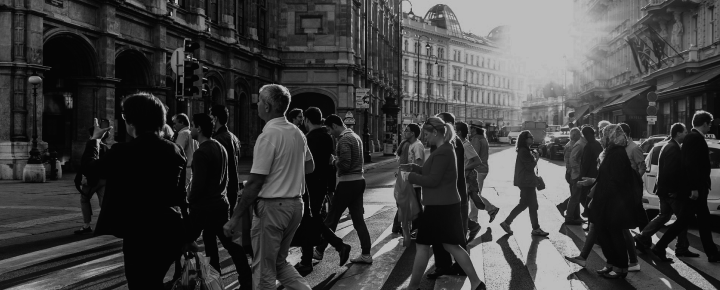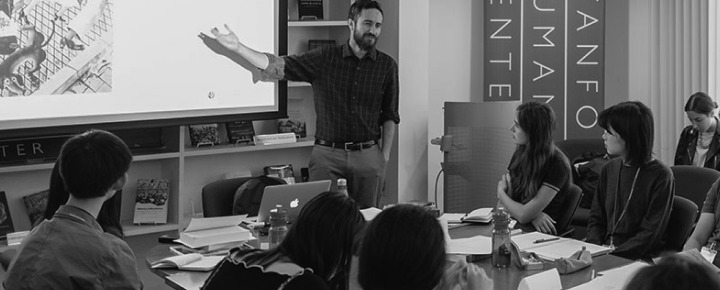
The novel has the capacity to encapsulate human existence, enabling us to interrogate our existing modes of being in the world, while imagining alternatives. Fiction can also represent or envisage the need for a collective activism, comprising both humans and more-than-humans, to face the planetary crisis. While the climate crisis has given rise to a state of despair for many around the world, novels that engage with the environmental crisis can reframe humanity’s collective struggle in a positive way. That reframing might lead to hope for characters, as well as for readers, allowing them to imagine new ways of living in the Anthropocene. The South Asian novel in English, because of its postcolonial orientations, and the region’s extreme vulnerability to the climate crisis, can engage with the historical and ongoing exploitation and injustices that have exacerbated the climate crisis. The collective struggle of the victims of environmental injustice or of those impacted by climate change, as represented in certain South Asian novels in English of the twenty-first century, is what I term “eco-collectivism” to capture its combination of hope, kinship, and activism.
In the novels that represent eco-collectivism, individuals or communities often resist social or state ideologies to face the challenges of environmental degradation. These works also highlight how a fictional communal setting can represent ways of living and communities that remain outside the discourses of capitalist modernisation and development, and are therefore officially “invisible.” The alternative modes of living highlighted or envisioned in eco-collectivist texts are similar to or inspired by the “Traditional Ecological Knowledge (TEK)”[1] or Indigenous peoples’ ways of life that emphasize interspecies and intraspecies connectivity, empathy, and care, acknowledging the agency of natural environments. Therefore, identifying eco-collectivism in a novel can offer alternative ways of living, which is all the more important when, in the current state of planetary crisis, there is much to learn from cultures that have been pushed to the margins. Towards the end of this piece, I shall draw out connections between hope and eco-collectivism with reference to Arundhati Roy’s The Ministry of Utmost Happiness (2017) and Amitav Ghosh’s Gun Island (2019).
Textual representations of eco-collectivism can offer hope, but this hope is grounded in a different future, rather than one in which society reverts to its unsustainable ways of living. Rather, the hope derived from eco-collectivism is what Jonica Newby labels “active hope.” According to Newby, “[a]ctive hope is grounded in reality. There is no pretending everything will be fine.”[2] Textual representations of eco-collectivism underpin this kind of active hope through the shared activism of a vulnerable or affected community or through communal ways of living that point to sustainable alternatives. Texts representing eco-collectivism do not subscribe to the belief that the climate crisis is a temporary phenomenon, nor do they suggest that it is separable from other forms of crisis, including socio-historically-produced inequalities, injustices, and violence.
The hope inspired by eco-collectivism is, therefore, different from optimism. The Australian geographer Lesley Head (2016), in her formulation of eco-ethics in the age of the Anthropocene, separates hope from optimism, and stresses the importance of an active self who never gives up. For Head, “hope is something to be practised rather than felt,”[3] and this is true in the context of eco-collectivism. Examples of practice might include, on the one hand, fighting for climate justice and raising a collective voice against policies that aggravate the crisis, and on the other hand, recognizing ways of living that remain outside of, or defy, consumer-driven overproduction, waste, overconsumption and emissions. Put differently, fighting and activism are not the only sources of hope; there is a gentler, companionable source of hope to be found in representations of communities or individuals, offering alternative ways of being in the world.
While envisioning different ways of living, eco-collectivist texts interrogate the catastrophic impact of Western beliefs in progress and development on the environment, evincing why so many developing countries, particularly those in South Asia, have become sites of environmental violence. In mimicking Western concepts of modernity, the inhabitants of these nations are, according to the anthropologist Deborah Bird Rose (2015), locked into a system that is “hope-destroying right from the start.”[4] An eco-collectivist novel’s representation of communal living or the collective activism of humans and nonhumans, as well as its underpinning of interspecies connectivity or care, opposes the extractivist and exploitative nature of Western modernism, suggesting alternatives or modifications to it. Literary texts of this kind, including The Ministry of Utmost Happiness and Gun Island, often represent the detrimental effects of modernity on the environment, at the same time adumbrating alternative and sustainable ways of living.
Eco-collectivist works often problematize the consumer culture that capitalism promotes. Ramachandra Guha’s insights into the connection between capitalism, modernity, and the climate crisis in his provocatively titled book, How Much Should a Person Consume?: Environmentalism in India and the United States (2006), are illuminating here. Guha underscores the individualistic nature of middle-class consumer culture across the world, particularly in the West, which depends on resource extraction and underpaid labour in other parts of the world. To interrogate the ecological impact of consumer culture, Guha refers to Mahatma Gandhi who famously observed:
God forbid, … that India should ever take to industrialization after the manner of the West. The economic imperialism of a single tiny island kingdom (England) is today keeping the world in chains. If an entire nation of 300 million took to similar economic exploitation, it would strip the world bare like locusts.[5]
What Gandhi was most afraid of has come true to a great extent, as much of today’s world, including Gandhi’s India, tries to imitate Western models of economic development, with devastating consequences for the climate. Guha follows Gandhi in emphasizing the need for alternatives to capitalism, alternatives which are often envisioned or encouraged in literary works promoting eco-collectivism, for instance in Indra Sinha’s Animal’s People (2007) and Tahmima Anam’s The Bones of Grace (2016).
The critical stance against capitalism or the anti-capitalist resistance in eco-collectivist works endows the texts representing eco-collectivism with a socialist perspective. Indeed, the Marxist critic Raymond Williams’s (1989) materialist ideology, as articulated in his essay “Socialist Ecology” (1982), offers a basis for my term “eco-collectivism.” Williams identifies the underlying causes of ecological problems, not in industrialization alone, but in profit-generating production and distribution processes. To make meaningful changes to existing production and distribution systems, he recommends controlling production to make it need-based, rather than focusing on profits by encouraging consumerism. In effect, he argues in favour of a socialist ecology that may “give us practical hope for a shared future.”[6] Eco-collectivist texts also hold profit-maximizing production and distribution processes culpable for the climate crisis, implying the need to adopt a “socialist ecology” appropriate for the Anthropocene. What distinguishes the socialist ecology of eco-collectivism from that of Williams is its emphasis on both humans and nonhumans, and its concern with the climate crisis.
While a socialist ecology offers the materialist basis for a text’s eco-collectivism, interspecies as well as intraspecies connectivity provides its spiritual basis. Most eco-humanists conjoin hope and connectivity in their formulation of environmental ethics fitting for the Anthropocene. Although connectivity and collectivism are not the same thing, the overlapping definition of “connectivity” articulated by Deborah Bird Rose (1999, 2015), Donna Haraway (2015), and Lesley Head (2016), among others, is helpful in expounding the connectivity promoted by eco-collectivist novels. Collectively, they call for connectivity as a means of maintaining hope in a time of planetary despair. Against the backdrop of a world ruptured by unbridgeable divides between the privileged and those without, literary representations of eco-collectivism gesture to a new and more capacious form of community that transcends the human. The foundations of that collectivism lie in justice, love, care, sympathy, and kinship.
Emotions form a pivotal component of eco-collectivism. Eco-collectivist texts, to underpin environmental justice, evoke emotions as part of a broader call for action. Characters in eco-collectivist works, such as Deen, Cinta, and Piya in Gun Island, respond emotionally to ecocide, environmental injustice, or any form of ecological harm, as well as the broad climate crisis, and either take individual or collective actions, or show the potential to do so. One common environmental emotion to be discerned in the characters of such works is solastalgia – a term coined by Glenn Albrecht (2005) to describe the emotion stimulated by “an attack on one’s sense of place, in the erosion of the sense of belonging (identity) to a particular place and a feeling of distress (psychological desolation) about its transformation.”[7] The change of one’s natural environment, through technological, modernist, or capitalist interventions, often evokes the feeling of solastalgia. I extend Albrecht’s notion of solastalgia to the context of the planetary crisis to underscore how an ecologically conscious character can experience solastalgia, even though their own natural environment has not transformed in such a way as to create “a form of homesickness one gets when one is still at ‘home’.”[8] Simply put, a character with high ecological sensitivity may experience solastalgia by perceiving the transformation of the natural environments of a place that does not necessarily constitute their home. However, the key element of solastalgia that I derive from Albrecht for my concept of eco-collectivism is this affective state’s capacity to inspire collective actions. As Albrecht contends: “solastalgia, as opposed to atavistic nostalgia, can also be future orientated, as those who suffer from it might actively seek to create new things or engage in collective action that provides solace and communion in any given environment.”[9]
* * *
Arundhati Roy’s The Ministry of Utmost Happiness offers a perfect example of a work that underscores the notion of eco-collectivism. The novel encompasses diverse forms of environmental violence in today’s India, resulting from consumerism, urbanization, modernist development, and industrialization influenced by neoliberal globalization. In this novel, the ironically-named “Jannat [paradise] Guest House,” which sits on an abandoned graveyard in a neglected part of old Delhi, emerges as a site of hope for a group of people victimized by social, political, religious, and environmental injustice. The marginalized humans—headed by Anjum, a hijra[10] who is abandoned by her society, and her deputy Saddam Hussain (originally Dayachand), a Dalit of the chamar caste ousted from his “normal” life after his father was lynched by a group of religious fanatics—take an initiative and set up a “guesthouse” in a graveyard. Nonhuman animals—like the ailing dog Biroo, who was experimented on in a laboratory, and the homeless bitch Comrade Laali and her puppies—also take refuge in the graveyard-cum-guesthouse. The humans and nonhumans create an egalitarian society based on love, compassion, empathy, and interspecies connectivity and kinship. In the process, they form a community whose members care for each other, think of collective benefits, and act as one, offering an alternative to the individualistic and consumerist way of living in the world beyond the graveyard. All these characters are, because of their individual situations, emotionally charged. Despite enduring suffering, defeat, and victimization, the resilience and resistance they show renders the guesthouse a site of eco-collectivist struggle. In the concluding scene of the novel, which takes place at the guesthouse, the portrayal of Guih Kyom, a dung beetle and a member of the guesthouse community, “lying on his back with his legs in the air to save the world in case the heavens fell,”[11] implies that even a tiny creature can be a part of the fight against planetary destruction. This scene exemplifies the essential spirit of eco-collectivism in creating unity to fight environmental and social injustice. Thus, the novel signals that hope for the future requires a joint activism, driven by an ethic of ecological collectivity and a determination not to give up the fight.
In Gun Island, in contrast to The Ministry of Utmost Happiness, Amitav Ghosh presents the environmental crisis from a planetary perspective, demonstrating the connectedness of apparently distant places. For instance, he shows how warming in one part of the world can lead to the arrival of invasive species in another. The novel’s parallels between human and animal migrations resulting from climate change emphasize Ghosh’s concern with global climate justice, showing the interconnections between the environmental and refugee crises. For example, in the novel’s Indian section, the unsustainability of life in the Sundarbans[12] as a result of climate change, leads two young men, Tipu and Rafi, to attempt to migrate to Italy by way of an extremely dangerous and “illegal” channel. One of these characters succeeds in reaching Venice, surviving a perilous journey, but the other is left behind and only much later manages to reach the Mediterranean sea near Sicily as part of a boatload of migrants, all seeking refuge and better lives in the West. The collective effort of a large number of multi-ethnic and multi-national people, along with a group of nonhuman animals, to rescue the refugees, is driven by environmentally-inspired emotions, while defying the state and the violent protests of xenophobic nationalists. This collective rescue effort by humans and nonhumans is a defining moment for the novel’s eco-collectivism. It highlights how humans and nonhumans might stand together to survive a crisis. The novel’s positive ending, showing the refugees gaining entry to Italy through an act of multi-species resistance, may make readers hopeful that we can face the challenges of climate change together.
Eco-collectivism in South Asian novels in English may help us to imagine alternative ways of collective and sustainable living to navigate the climate crisis. Such works envision reformulating the “human” (anthropos) of the Anthropocene as a preserver, in contrast to our usual role of destroyer, recentring nonhumans in our ecological thinking. Eco-collectivist novels postulate that since humans have caused the climate crisis, they should accept responsibility for redressing it, and in so doing, they must abandon individualistic thinking in favour of collectivism. Hope in the Anthropocene lies in an eco-collectivist vision that the enormity of the climate crisis can bind humans together with other species, to act for our collective survival.
References
Albrecht, Glenn. “‘Solastalgia’. A New Concept in Health and Identity.” PAN: Philosophy Activism Nature 3 (2005): 41–55.
Ghosh, Amitav. Gun Island. London: John Murray, 2019.
Ghosh, Amitav. The Nutmeg’s Curse: Parables for a Planet in Crisis. London: John Murray, 2021.
Guha, Ramachandra. How Much Should a Person Consume?: Environmentalism in India and the United States. Berkeley: University of California Press, 2006.
Haraway, Donna. “Anthropocene, Capitalocene, Plantationocene, Chthulucene: Making Kin.” Environmental Humanities6, no. 1 (2015): 159–65.
Head, Lesley. Hope and Grief in the Anthropocene: Re-conceptualising Human-Nature Relations. Abingdon, Oxfordshire: Routledge, 2016.
Newby, Jonica. Beyond Climate Grief: A Journey of Love, Snow, Fire and an Enchanted Beer Can. Sydney, N.S.W.: NewSouth Publishing, 2021.
Rose, Deborah Bird. “Indigenous Ecologies and an Ethic of Connection.” In Global Ethics and Environment, edited by Nicholas Low, 175–188. London: Routledge, 1999.
Rose, Deborah Bird. “The Ecological Humanities.” In Manifesto for Living in the Anthropocene, edited by Katherine Gibson, Deborah Bird Rose, and Ruth Fincher, 1-5. New York: Punctum Books, 2015.
Roy, Arundhati. The Ministry of Utmost Happiness. Gurgaon, Haryana: Penguin Random House India, 2017.
Williams, Raymond. Resources of Hope: Culture, Democracy, Socialism. Edited by Robin Gable. London: Verso, 1989.
Acknowledgement: This paper is based on the author's PhD dissertation in progress at the University of Otago, New Zealand. The author acknowledges his profound gratitude to his supervisors, Associate Professor Christine Prentice and Associate Professor Grace Moore, for their insightful, constructive, and untiring feedback.
An earlier draft of the paper was presented in person at “Nature Feelz: Perspectives and Reflections on Ecological Emotions,” a symposium organized by Sydney Environment Institute, the University of Sydney, which was held from 5 to 7 December 2022.
[1] Ghosh, The Nutmeg’s Curse, 84
[1] Ghosh, The Nutmeg's Curse, 84.
[2] Newby, Beyond Climate Grief, 86.
[3] Head, Hope and Grief, 75.
[4] Rose, “Indigenous Ecologies,” 184.
[5] Quoted in Guha, How Much Should, 231.
[6] Williams, Resources of Hope, 225.
[7] Albrecht, “Solastalgia,” 45.
[8] Albrecht, “Solastalgia,” 45.
[9] Albrecht, “Solastalgia,” 45.
[10] Hijra refers to a transgender, or in the South Asian context, an intersex person.
[11] Roy, The Ministry of Utmost Happiness, 438.
[12] The largest mangrove forest in the world.



